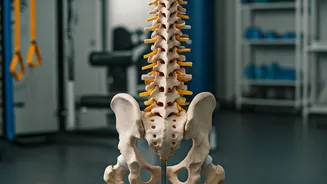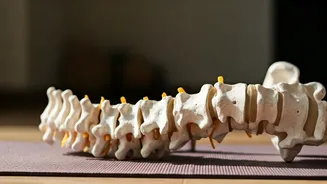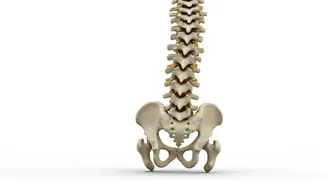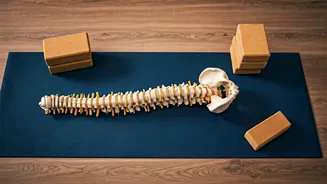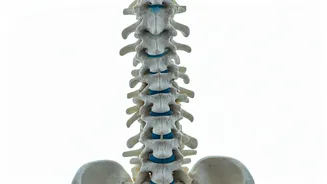Understanding Back Pain
Back pain can stem from a myriad of sources, encompassing injuries, poor posture, or even stress-related muscle tension. Understanding the root cause is
the initial stride toward effective management. Common issues include strains, sprains, and chronic conditions like sciatica or arthritis. Effective home exercises require a tailored approach, catering to the specific type and location of pain. Simple changes in daily habits, like sitting upright with proper support or using a supportive mattress, can considerably alleviate symptoms. Consulting with a healthcare professional is crucial for accurate diagnosis and personalized treatment plans. They can recommend exercises and other interventions that are appropriate for an individual’s specific requirements. Exercise aims to fortify the muscles supporting the spine, improve flexibility, and enhance blood circulation, which collectively contribute to reducing pain and preventing future occurrences. Regular practice, along with other healthy lifestyle choices, plays a pivotal role in maintaining a healthy back.
Gentle Mobility Stretches
Gentle mobility exercises are excellent for initiating a home back pain management routine. Start with exercises such as knee-to-chest stretches; while lying on your back, draw one knee at a time to your chest, holding for 15-20 seconds. This stretches the lower back. Another beneficial exercise is the pelvic tilt; lie on your back with your knees bent and your feet flat on the floor. Gently tilt your pelvis, flattening your lower back against the floor, and hold for several seconds. Then, arch your back slightly. Cat-cow stretches can also improve spine flexibility. Begin on your hands and knees, then alternate between arching your back (cat) and dropping your belly toward the floor (cow), focusing on smooth movements. Child's pose is another excellent option; kneel on the floor, then sit back on your heels and stretch your arms out in front of you. These stretches reduce stiffness and ready the back for more intense activity. Regular practice of these gentle stretches helps to enhance the range of motion in the spine, fostering greater flexibility and helping to alleviate minor discomfort. They serve as a foundational step, preparing the muscles for more intense exercises, and can offer immediate relief from pain when done regularly.
Core Strengthening Exercises
Strengthening your core is vital for supporting your spine and preventing back pain. Begin with exercises like planks; start in a push-up position, but rest on your forearms instead of your hands. Maintain a straight line from head to heels, engaging your core muscles to avoid sagging. Hold for 30-60 seconds, gradually increasing the duration as you get stronger. Bird-dog exercises also strengthen the core; start on your hands and knees, then extend one arm forward and the opposite leg backward simultaneously, keeping your core engaged and your back straight. Alternate sides, performing several repetitions on each side. For a low-impact option, consider doing abdominal bracing exercises; lie on your back with your knees bent, and imagine you're about to be punched in the stomach. Tighten your abdominal muscles as if you're preparing for that punch, hold for a few seconds, and relax. Strengthening the core improves posture, stabilizes the spine, and minimizes the strain on the back muscles, thus reducing the probability of experiencing discomfort. Incorporating core strengthening into your daily routine is a long-term strategy to preserve a healthy back and enhance overall physical well-being.
Targeted Back Strengthening
Targeted back-strengthening exercises focus directly on the muscles that support your spine. One such exercise is back extensions; lie face down, then gently lift your chest and shoulders off the floor, squeezing your back muscles. Avoid arching your back too much. Repeat several times, pausing briefly at the top of the movement. Another beneficial exercise is the Superman; lie face down with your arms extended overhead and lift your arms, legs, and chest off the floor simultaneously, like Superman flying. Hold for a few seconds and repeat. These movements help to strengthen the muscles supporting the back, like the erector spinae. Practicing these exercises regularly leads to improved spinal stability, better posture, and less back discomfort. It is recommended to start with a few repetitions and gradually increase the number as you become stronger. It's essential to listen to your body, and stop immediately if you feel any sharp or shooting pain.
Importance of Posture
Good posture is a significant factor in preventing and reducing back pain. Pay attention to your posture while sitting; always use a chair that provides good lumbar support and sit with your feet flat on the floor or on a footrest. Keep your back straight and your shoulders relaxed, avoiding slouching or leaning forward. While standing, keep your head up, shoulders back, and core engaged. Distribute your weight evenly on both feet. When lifting objects, bend your knees and keep your back straight, maintaining the object close to your body. These steps greatly reduce strain on your back muscles. Regularly assess your posture, and if necessary, utilize reminders like a sticky note or a postural assessment app. Incorporating conscious attention to posture into your daily life will foster better spinal alignment. Ultimately, this promotes more efficient movement, diminishes the likelihood of pain, and contributes to the long-term health of the back.
Lifestyle Adjustments
Alongside exercises, several lifestyle adjustments can significantly impact back health. Maintaining a healthy weight reduces strain on the spine; excess weight places additional pressure on the back muscles and joints. Regular exercise, including both cardio and strength training, is beneficial for overall physical fitness and the health of your back. Smoking can impede blood flow to the spinal discs, which can hasten the aging process and escalate back pain. Avoiding this habit can significantly improve back health. Ensure your sleeping environment supports your spine, as a mattress that offers adequate support and a pillow that keeps the neck aligned with the spine is necessary. Regular breaks and stretching are essential if your job requires long periods of sitting. Integrate short walks or quick stretches into your day to prevent stiffness. These lifestyle adjustments, when implemented consistently, improve back health and improve the quality of life, offering an integrated approach to back pain management.
